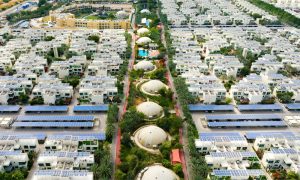Is repurposing structures the future of sustainable development?
Repurposing structures makes absolute sense in a world striving to lessen its impact on the planet and its natural resources

In architecture, adaptive reuse or repurposing takes an existing structure and transforms it, so it is suitable for an entirely different use than what it was originally designed for. Around the world this approach has seen old or even historic structures such as clocktowers, factories and even windmills being transformed into homes, offices, community centres etc.
Repurposing structures makes absolute sense in a world striving to lessen its impact on the planet and its natural resources, and the approach is starting to be deployed in the GCC, particularly in historical areas in key cities.
Perhaps the biggest example of this can be seen in Dubai, with the Department of Tourism and Commerce Marketing (DTCM), Dubai Municipality and Dubai Culture working together to transform parts of the city centered around Dubai Creek into the Dubai Historical District (opening picture).
Around the world as well, there are stunning examples of repurposed structures, the following of which are some of the best that Middle East Construction News has come across recently:
- Ship hull turned into a building with greenery.
- Old cement factory turned into a home.
- The world’s tallest climbing wall is inside a repurposed grain silo.
- An old clock tower has been transformed into a penthouse.
- A hotel in Oxford in the UK was formerly a prison.
- A bank vault has been turned into a school library.
Repurposing structures is something that is bound to captivate more of the built environment’s attention in the coming months and years. In fact, Ahmed Khadier, Founder, Director at Pragma is scheduled to discuss the topic in detail at Middle East Consultant’s Future of Architecture Summit. The event will take place at the Oberoi Hotel in Business Bay, Dubai on 7 June and attendance is complimentary for construction professionals.
Is repurposing structures the future of sustainable development? Share your opinion, as well as examples of your favorite repurposed structures with MECN in the comments below.





























